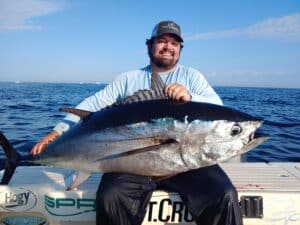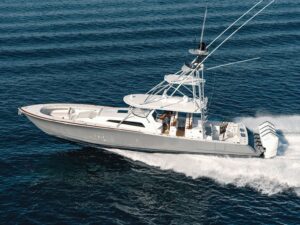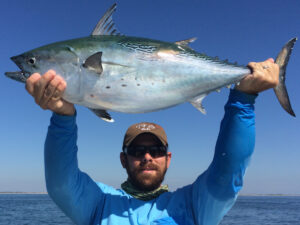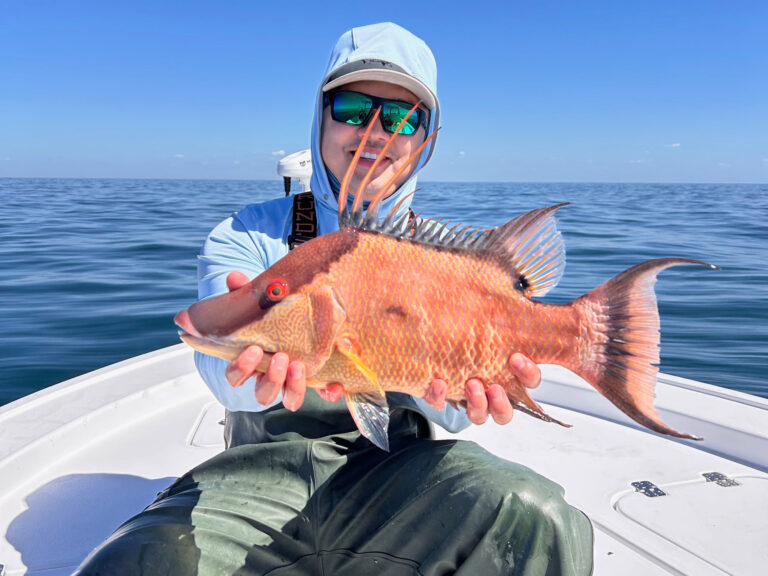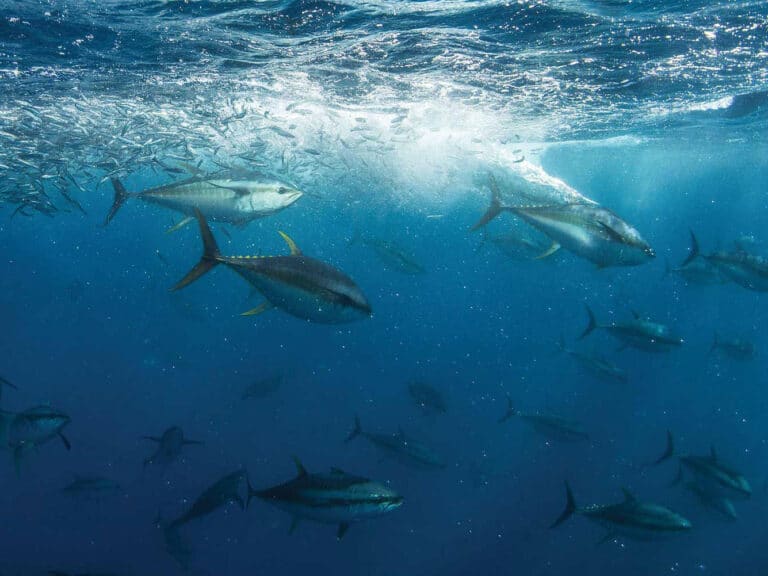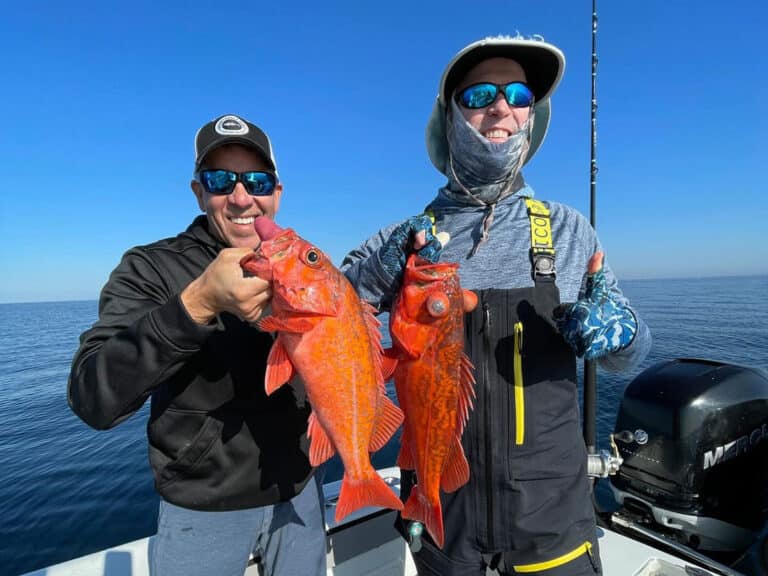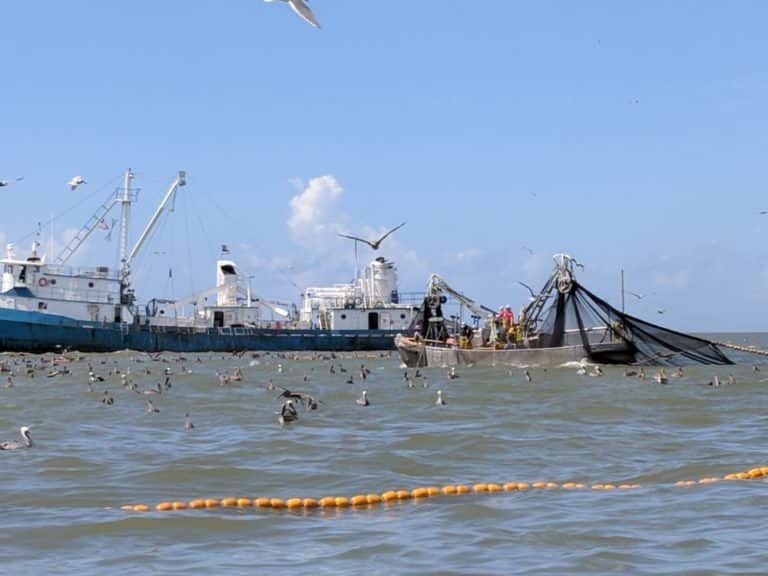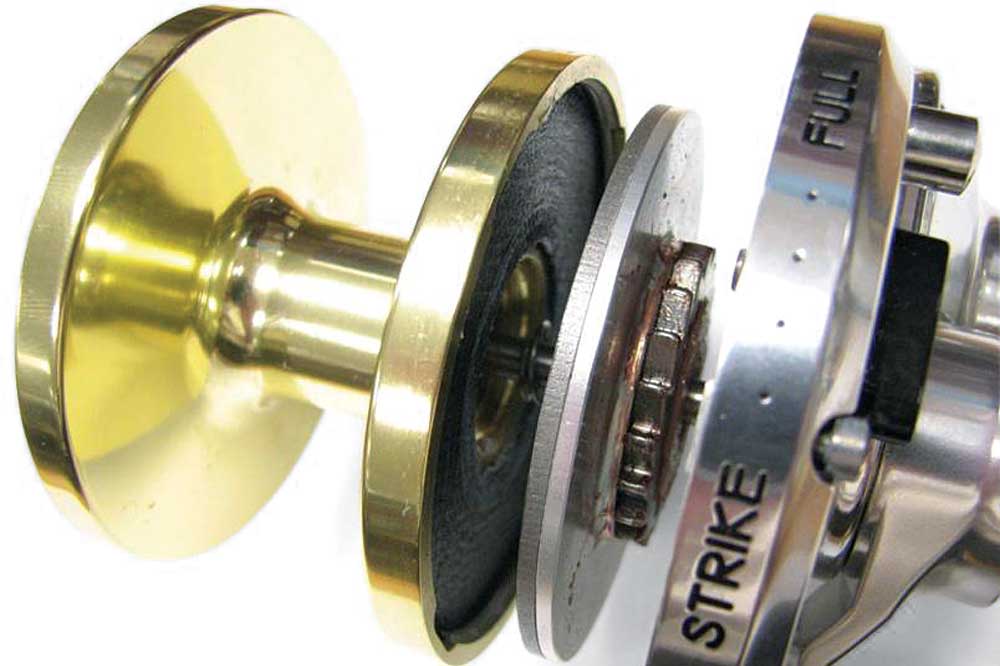
Ambient temperature, heat generated during a hard run, spool diameter as line leaves a reel — all these variables can affect a reel’s drag. Each might change your drag only slightly, but their combined effects can quickly compound.
For example, set a drag on a warm afternoon and leave it overnight. If you hook a big fish the next morning and it happens to be chilly out, your drag’s now tighter. If a big fish zips out 150 or 200 yards of line, your drag’s now tighter. If you fail to realize and allow for that — snap! It’s a sad story and one oft repeated, but avoidable. When that 50- or 60-pound kingfish, striped bass or mahi piles on, understanding how drags change and applying that knowledge during the fight might make the difference between getting that trophy to the boat or ending up with just another fish story. Here are seven suggestions to help you understand why drag tension changes and how to deal with it.
Know When to Back Off the Drag
“I’ve seen star-drag reels get hotter than a firecracker,” says Gary Jarvis, a decades-long captain from Destin, Florida. That sudden heat tightens drags — actually changing friction between drag surfaces. If they get too hot, drags might stick, requiring even more pressure to start the spool rolling each time the fish takes line.
“In lever-drag reels, the drags are almost the same diameter as the spool. Star-drag reels have a smaller drag surface area,” Jarvis explains. He also brings up another critical difference — lever-drag reels apply pressure directly to the spool; each turn of the spool is one rotation against drag surfaces. Star-drag systems work through the gears, so a reel with a 6-to-1 gear ratio takes six turns of the spool to turn drag washers once. This puts extra pressure on smaller drag surfaces and generates heat quickly. To combat that heat on any reel, but particularly on those with star drags, Jarvis says to back star drags off a bit on prolonged hard runs, and even use the wash down hose to cool reels.
Adjust for Shrinking Spool Diameter
“Spool diameter” is a function of how much line remains on the spool. Each yard of line the fish pulls shrinks the effective spool diameter, and as it gets smaller, the spool has to turn more times to release a given length of line, putting more pressure on the fishing line. Tall, narrow spools shrink in diameter faster than short, wide ones for a given length of line removed. “People see that spool getting smaller, and they tend to tighten the drag, but that’s the last thing you want to do,” Jarvis says. Instead, loosen the drag as line comes off the reel and usable spool diameter shrinks. Make the mistake of tightening the drag or failing to loosen it and, Jarvis says, “nine times out of 10, you’ll break that fish off before you get spooled.”
Watch the Fishing Rod to Gauge Drag Stress
“Look at your rod tip. When you see that rod bend increase, that’s when you need to back off your drag,” Jarvis says. He uses fast-action rods that show increased strain well. When chasing a fish, a boat captain can read the rod bend to help him gauge strain on the line.
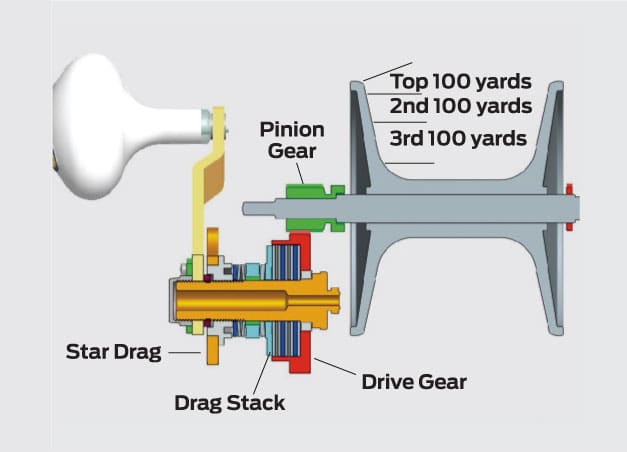
Know Your Foe
The extent and nature of strain on a drag varies widely by the type of fight. “If an angler’s fighting a wahoo or big king, you can almost drive up on it, but you know that fish is going to run again,” Jarvis says. As these known sprinters swim slowly between blistering runs, Jarvis uses the boat to regain line while also buying time for the drag to cool, especially on a smaller reel. On the other hand, Jarvis has to let anglers slug it out with slow, powerful fish like amberjacks, but these heat the drags less. Particularly when anglers are fighting any species known for both speed and endurance, they will need to adjust drag pressure during the battle, even as the captain maneuvers to keep after the fish.
Consider Large Ambient-Temp Swings
If you’re fishing a place and time with large swings in ambient temperature (e.g., chilly at night but downright hot during the day), bear in mind that many drags will need readjusting (tightening) as the air warms up (and the more so for reels sitting in the sun). Grease gets thicker and less slippery as it cools. The aluminum, stainless steel and plastic inside reels all expand differently as they warm, changing the pressure on drag surfaces pressed against one another.
Jarvis, like most pros, checks drags not only on the morning of a fishing trip, but during the day as well. But if he expects a particularly cold early morning before a long run to the offshore grounds, he’ll “set drags the afternoon before, when the reels are warm.”
Hand Check
For Jarvis, a critical difference between hooking fish and catching them comes down in part to “drag awareness.” He says: “We check drags throughout the day. Not with a scale, but just by pulling on the line. You know what feels right.” A failing drag might feel loose or tight or sticky, but all such glitches are easily noticed if anglers and crew check periodically.
TLC for Spinners
Spinning-reel drag systems are similar to those on star-drag reels, but pressure is applied directly to spool, not through a reel’s gears. This reduces the torque on drags, but it also puts drag systems nearer to the elements. “Any crud or corrosion that gets under that spool will cause big problems,” Jarvis says. “Spinning reels need more tender-loving care. You really need to pull spinners apart and clean drag washers every fifth or sixth day of fishing.”
“Not everyone can have a boatful of gold reels,” Jarvis says. “When I’m fishing a big-money tournament, I want the best equipment I can get, but when we’re just fun fishing, we get by with a lot less. There’s no reason you can’t get the job done if you understand the limitations of your tackle.”

